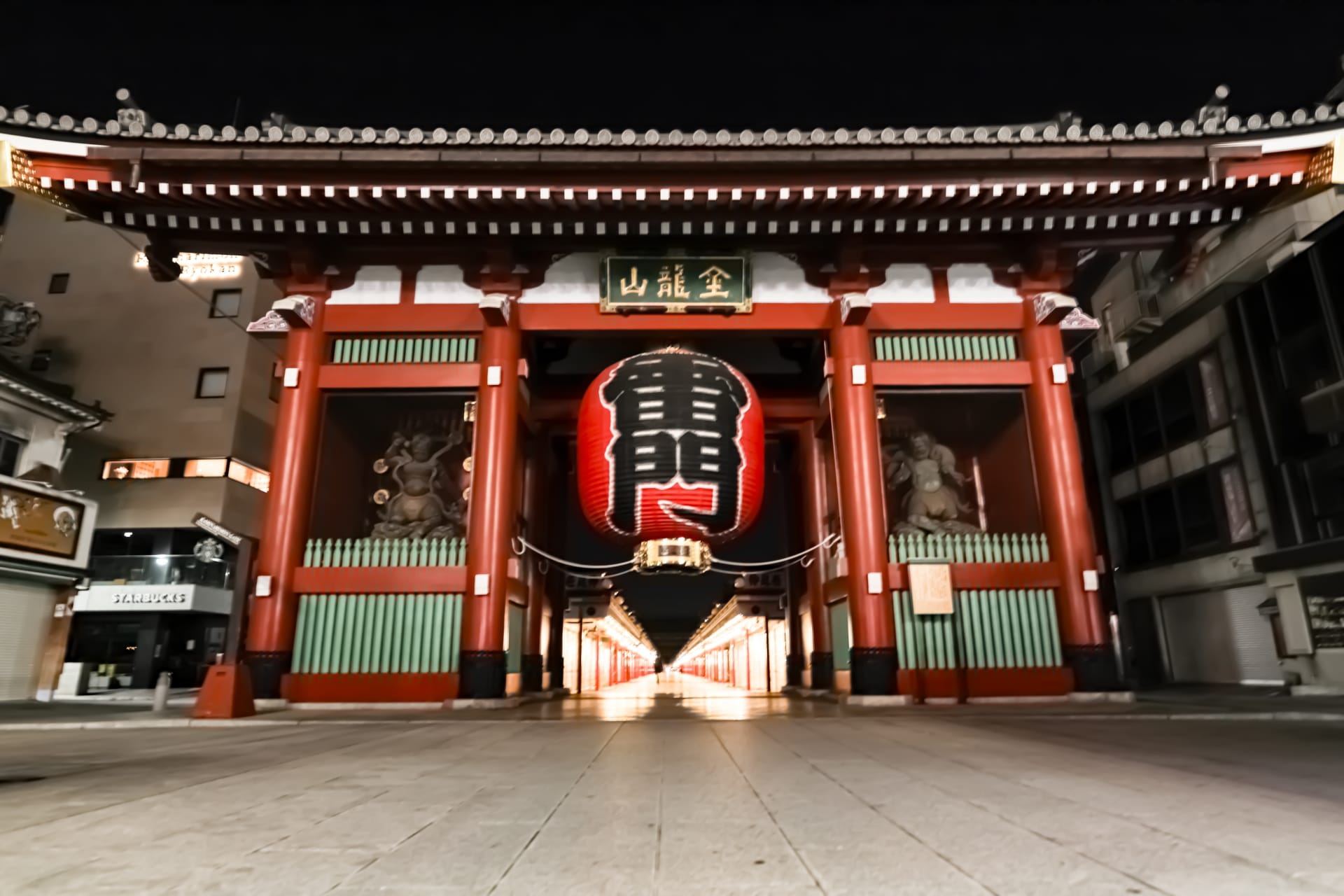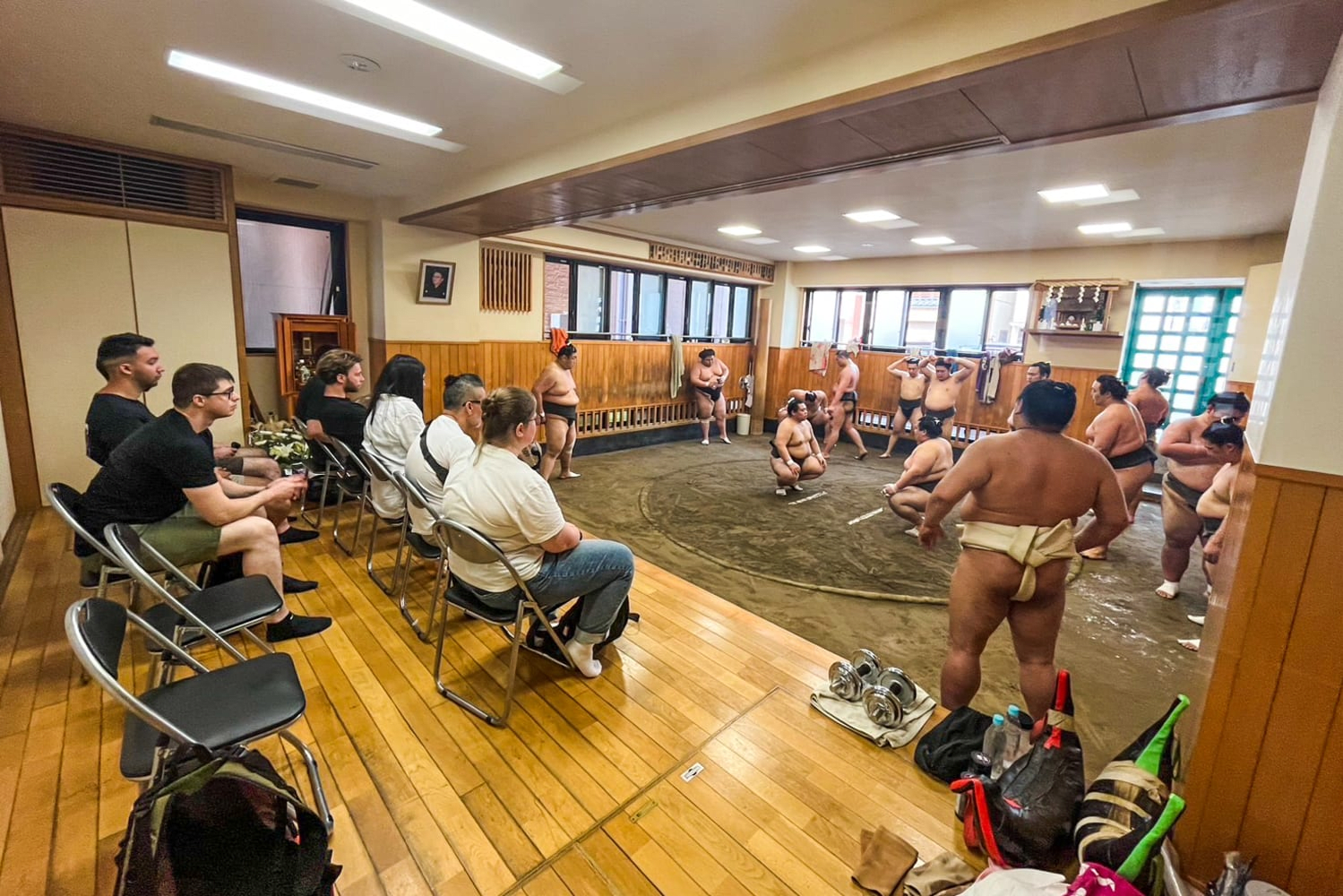Exploring Asakusa: Your Essential Guide to Tokyo's Most Traditional Neighborhood
Step into Asakusa and you'll find a scene where time seems to stand still, away from Tokyo's hustle and bustle. The large lantern at Kaminarimon, the bustling crowds on Nakamise Street, and the majestic Sensoji Temple - Asakusa is a special place even for us Japanese.
This neighborhood, where traditions and culture from the Edo period still thrive, is a precious spot for foreign tourists to experience "authentic Japan." However, it's also true that the area overflows with tourists, especially on weekends and holidays.
Nevertheless, the charm of Asakusa comes from experiences that delight all five senses - matcha experiences, kimono walks, and traditional food tours. In particular, our MagicalTrip's "Asakusa Cultural Walk & Matcha Making Tour" offers authentic matcha experiences and monjayaki cooking with guides who have lived in Asakusa for over seven years, exploring hidden gems that tourists cannot find on their own.
Also, with the "Asakusa Kimono Photography Tour" you can wear a kimono or yukata from early morning to avoid crowds and enjoy photography sessions with a professional photographer, creating wonderful memories perfect for social media.
In this article, I'll introduce the wide-ranging charms of Asakusa.
Table of Contents
・What is Asakusa?
・Three Ways to Enjoy Asakusa
・Recommended Tourist Spots in Asakusa
・Recommended Courses to Fully Enjoy the Asakusa Area
・Three Recommended Tours to Enjoy Asakusa to the Fullest
・Spots to Visit Along with Asakusa
・Access to Asakusa
What is Asakusa?

Asakusa is a special area that has been loved by Japanese people from the Edo period to the present day as the center of downtown Tokyo culture. The most distinctive feature of Asakusa is its exquisite fusion of tradition and modernity, which you can't see in other areas of Tokyo.
Sensoji Temple and Kaminarimon Gate are undoubtedly symbols of Japanese culture, and they are places where foreign tourists can truly feel "I'm in Japan!" Nakamise Street is lined with shops that have continued since the Edo period, where you can enjoy traditional Japanese sweets and crafts.
The charm of Asakusa can be enjoyed day and night. At night, the scenery of Sensoji Temple beautifully illuminated with Tokyo Skytree in the background is truly spectacular. I often visit Asakusa after work to enjoy the fantastical night atmosphere, which differs from daytime.
Asakusa is not just a tourist spot but also a vibrant neighborhood where many people still live. While offering a taste of good old Japan, it continues to enchant visitors as an attractive tourist destination that incorporates modern elements.
Three Ways to Enjoy Asakusa
When visiting Asakusa, I'd like you to experience its charms from various angles, not just touring the sightseeing spots. Here, I'll introduce three especially recommended ways to enjoy Asakusa.
Enjoying Food Strolls
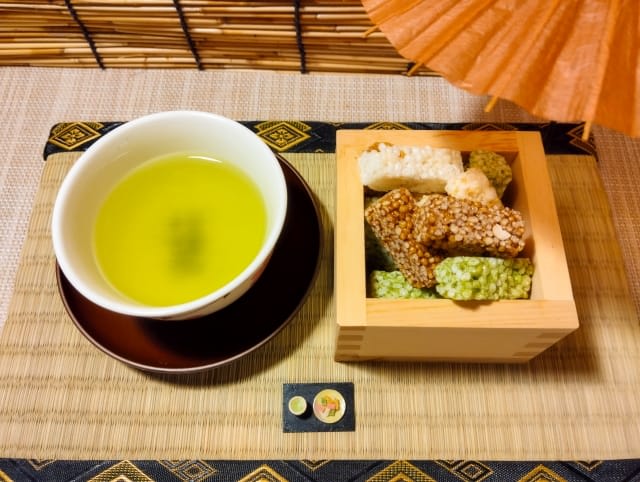
When you visit Asakusa, I recommend enjoying food strolls. Nakamise Street is filled with traditional snacks that have been loved since the Edo period.
I especially recommend the crispy "Kaminari-okoshi" rice crackers, the soft "Ningyo-yaki" cakes filled with sweet bean paste, and the "Age-manjuu" with their crispy exterior and fluffy interior. These are perfect for a light snack and can be easily enjoyed while walking.
If you want to deeply understand Asakusa's food culture, you must visit Hoppy Street. This street is lined with casual izakayas (Japanese pubs) bustling with locals. I often stop by after work, and enjoying juicy yakitori or gooey "motsuni" stew with a Hoppy drink lets you experience the true atmosphere of Asakusa. Some shops have more regular local customers than tourists, allowing you to glimpse daily life in downtown Tokyo.
Experiencing Japanese Culture Like Matcha
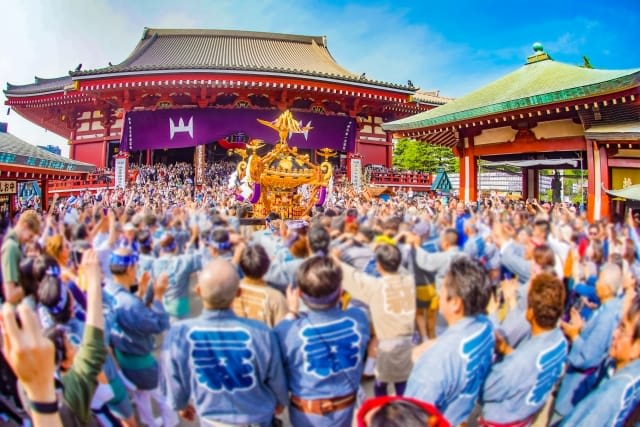
If you want to create unforgettable memories in Asakusa, experiencing Japanese culture is essential. The tea ceremony experience, in particular, is an excellent opportunity to know the heart of Japanese "wa" (harmony).
Asakusa has tea ceremony facilities for foreigners where you can learn how to make matcha. When I guided my foreign friends, they were impressed by the beauty and depth of the movements involved in making matcha. Learning the techniques of turning the tea bowl and whisking matcha with a bamboo whisk deepens your understanding of Japanese culture.
Touring Asakusa in a rickshaw is also a unique experience. Riding in a traditional rickshaw, you'll encounter scenery not visible from cars or buses. The rickshaw pullers explain Asakusa's history and interesting episodes in English, allowing you to deepen your knowledge while having fun.
Praying at Sensoji Temple and drawing omikuji (fortune slips) are good opportunities to experience Japanese temple culture. Recently, omikuji in English have increased, allowing you to enjoy traditional Japanese culture without language barriers.
Also, traditional festivals like Sanja Matsuri are held in Asakusa. The powerful mikoshi (portable shrines) and traditional dances offer a precious opportunity to experience the splendor of Japanese festival culture. This is one of the events I look forward to every year.
If you want to experience Japanese culture without language barriers, I recommend MagicalTrip's "Asakusa Cultural Walk & Matcha Making Tour". With an English-proficient guide, you can deeply understand Asakusa's culture. The guide will show you Asakusa from a local perspective, allowing you to discover charms you would never know as just a tourist.
Walking Around in Kimono
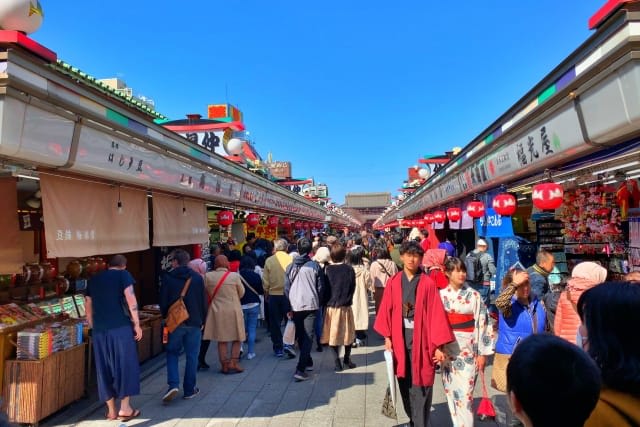
One of the most memorable experiences in Asakusa is walking around in a kimono. Asakusa has many kimono rental shops for foreign tourists, and most shops accommodate English, so there's no need to worry about language barriers.
Touring Kaminarimon, Nakamise Street, and Sensoji Temple in a kimono offers a special experience different from regular sightseeing. The combination of traditional Japanese buildings and kimono creates a picturesque scene. I have visited Asakusa in a kimono with friends before, and it naturally straightened my posture, allowing me to walk through the streets with unusual elegance.
Also, when foreigners walk around in kimono, they often receive warm glances from locals. For taking beautiful commemorative photos, I recommend the early morning hours when there are fewer people.
For smooth kimono rental and street walking, MagicalTrip's "Asakusa Kimono Photography Tour" is perfect. With shooting from early morning to avoid crowds and professional photographers taking wonderful photos, this tour is highly recommended for those who want a memorable Asakusa experience.
Recommended Tourist Spots in Asakusa
Asakusa has various attractive spots, from historical landmarks to hidden gems known only to locals. Here, I'll introduce the must-visit classic spots and off-the-beaten-path locations worth exploring on your Asakusa trip.
Classic Spots
If you're visiting Asakusa for the first time, I recommend starting with these classic spots. These are symbolic places representing Asakusa's history and culture, beloved by many people from the Edo period to the present day.
Sensoji Temple and Kaminarimon
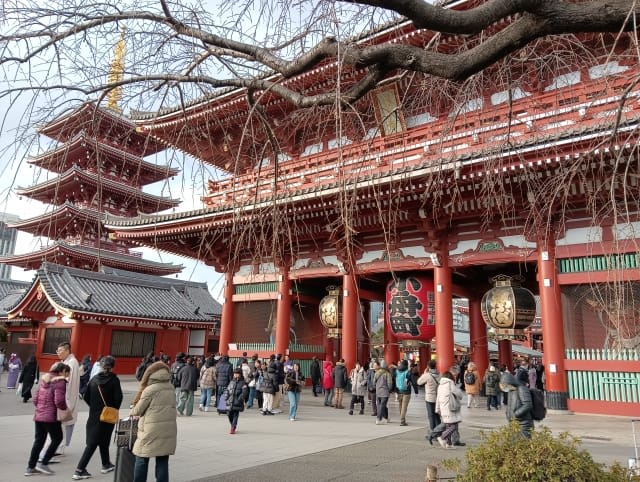
Kaminarimon, which serves as the entrance to Asakusa sightseeing, and Sensoji Temple beyond it are symbolic of Asakusa. The red large lantern characteristic of Kaminarimon is a popular spot for many tourists to take commemorative photos. I always take pictures here when guiding friends from overseas. If you visit in the evening, you can also take fantastic photos in front of the illuminated large lantern.
Passing through Kaminarimon and Nakamise Street, you'll see the majestic main hall. Sensoji Temple is Tokyo's oldest temple, with a long history said to have been founded in 628. You can experience traditional worship methods at the main hall. First, purify your hands and mouth at the purification fountain, then throw a five-yen coin into the offering box, and worship with two bows, two claps, and one bow.
Within the temple grounds, there's a place to draw omikuji. Now they offer fortune explanations in English too, so foreign visitors can enjoy it with peace of mind. If you draw "Great Fortune," you'll feel lucky all day. When I visited recently, I drew "Middle Fortune," but I was still quite happy.
Nakamise Street
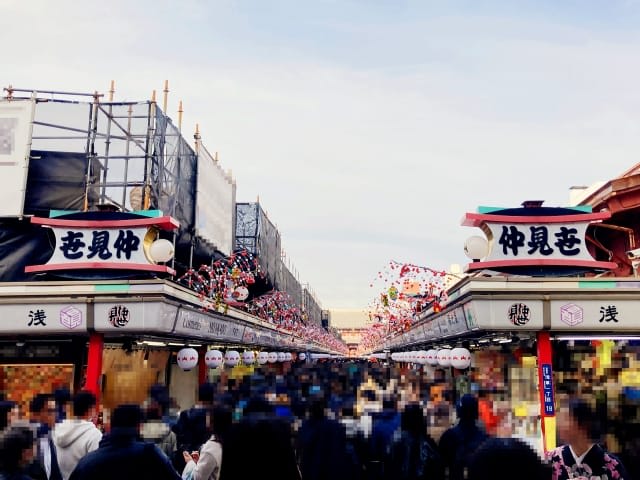
Nakamise Street, which stretches about 250 meters from Kaminarimon to Sensoji Temple, is said to be one of Japan's oldest shopping streets. I'm always amazed that this short stretch contains about 90 shops. From traditional stores continuing since the Edo period to modern shops, truly diverse stores line the street.
Walking down the street, you can find traditional Japanese souvenirs. My foreign friends especially appreciate folding fans, Japanese pattern accessories, and unique Japanese character goods. It's also ideal for food strolls, with traditional Japanese snacks like ningyo-yaki, kaminari-okoshi, and age-manjuu.
Since weekends are particularly crowded with tourists, I recommend visiting on weekday mornings or after evening when it's relatively empty.
Tokyo Skytree
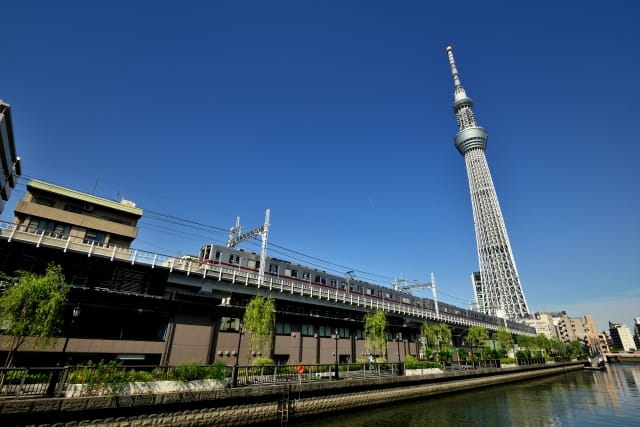
Just a short distance from Asakusa, you can visit Tokyo Skytree. Standing at 634 meters tall, Tokyo Skytree is currently Japan's tallest structure and one of the tallest towers in the world. When I first visited, I was impressed by its overwhelming height and beautiful design.
From Skytree's observation deck, you can see a 360-degree view of Tokyo. On clear days, you can even see Mount Fuji from this scenic spot, and you can enjoy completely different views in the morning, afternoon, evening, and night. I especially recommend visiting from dusk. The sight of Tokyo's streets gradually illuminating with sunset is truly spectacular.
Also, Skytree Town includes various shops, restaurants, an aquarium, and a planetarium, allowing you to enjoy a full day. I particularly recommend the Skytree-exclusive souvenir shop, which offers many unique goods featuring Tokyo's new symbol.
Off-the-Beaten-Path Spots
While Asakusa's classic tourist spots are certainly attractive, there are wonderful discoveries in off-the-beaten-path spots just a short walk away. These spots have relatively fewer tourists, offering a more authentic Tokyo experience.
Sumida Park
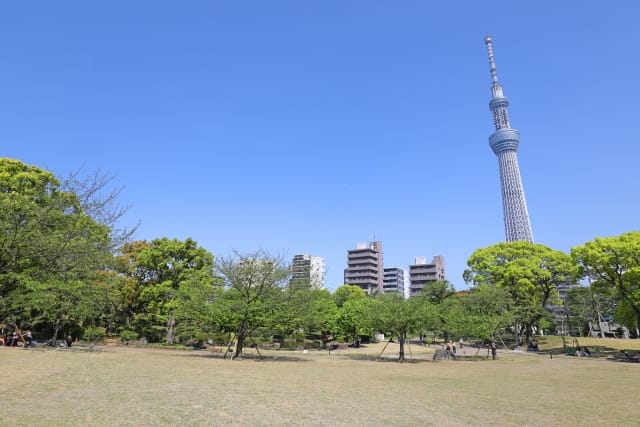
Sumida Park, which spreads across the Sumida River from Sensoji Temple, is a relaxation spot for locals and a wonderful relaxation spot for tourists. I often visit here on holidays to walk along the Sumida River. The river breeze is pleasant and makes you forget the city's hustle.
The park's greatest charm is enjoying different landscapes with each season. In spring, cherry blossoms bloom fully, and hanami (cherry blossom viewing) under the cherry trees offers an excellent opportunity to experience Japan's spring tradition. I visit with friends every year during cherry blossom season to enjoy picnics. Foreign visitors also greatly appreciate such Japanese cultural experiences.
In summer, it becomes the venue for the Sumida River Fireworks Festival, with about 20,000 fireworks coloring the night sky. The fireworks launched with Asakusa and Tokyo Skytree in the background are stunningly beautiful. So many people come early to secure spots for this popular event every year. I also have memories of securing a spot with friends early in the morning and staying until night.
Also, you can view the entire Tokyo Skytree from the park, which is ideal for photography. I recommend visiting at dusk when the silhouette of Skytree emerges beautifully with the setting sun.
Edo Taito Traditional Crafts Museum
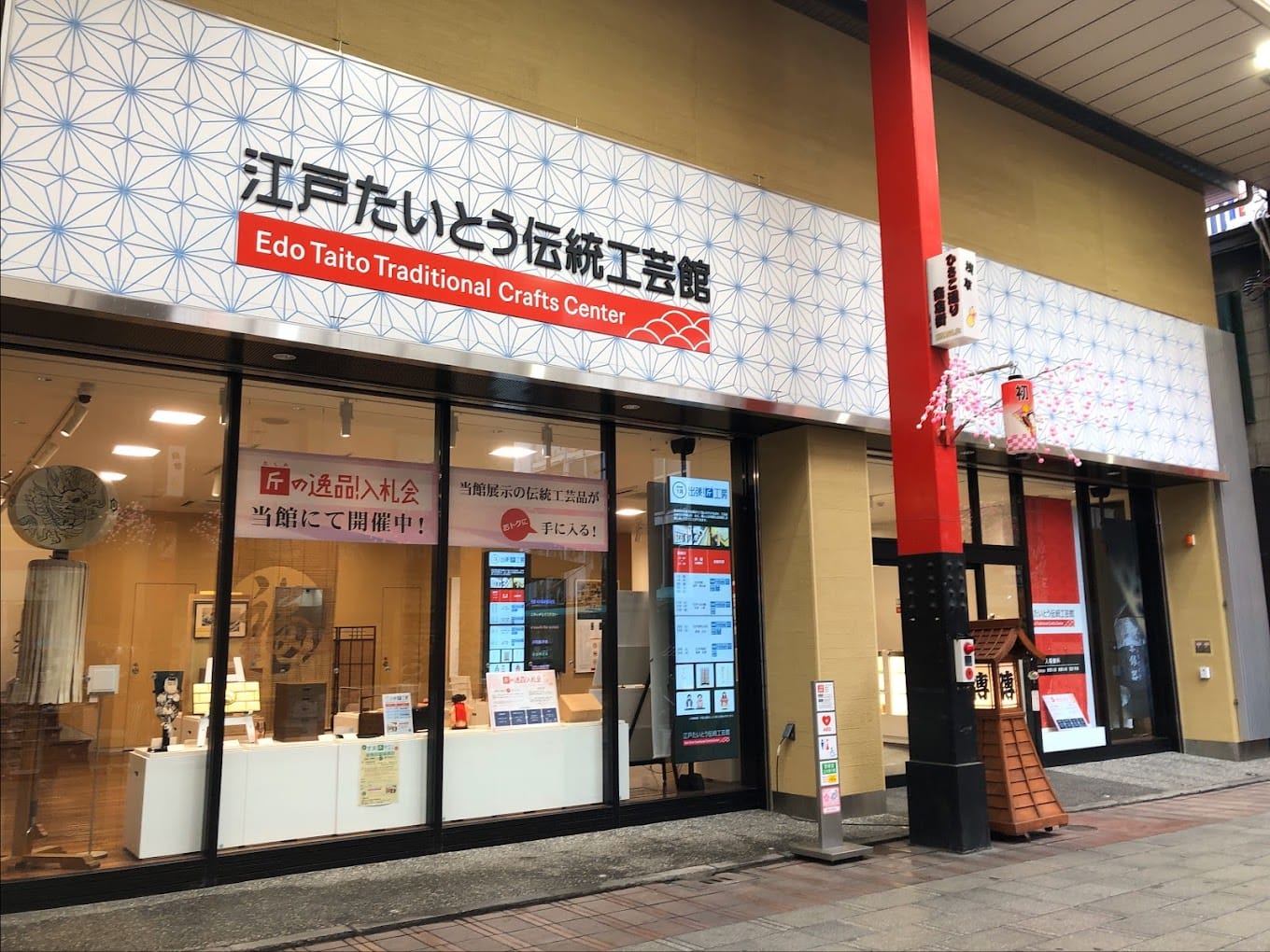
The Edo Taito Traditional Crafts Museum, located a little away from Sensoji Temple, is an off-the-beaten-path spot where you can authentically learn about Japanese traditional crafts. When I first visited, I was surprised by the high quality of the exhibitions. Many crafts made with traditional techniques continuing since the Edo period are displayed, allowing you to closely appreciate Japanese craftsmanship.
Workshops are held regularly, and if you're lucky, you might have a chance to experience traditional crafts firsthand.
Since there are relatively few tourists, it's an ideal spot for those who want to appreciate Japanese traditional crafts at a leisurely pace.
Website: https://craft.city.taito.lg.jp/kogeikan/
Asakusa Engei Hall
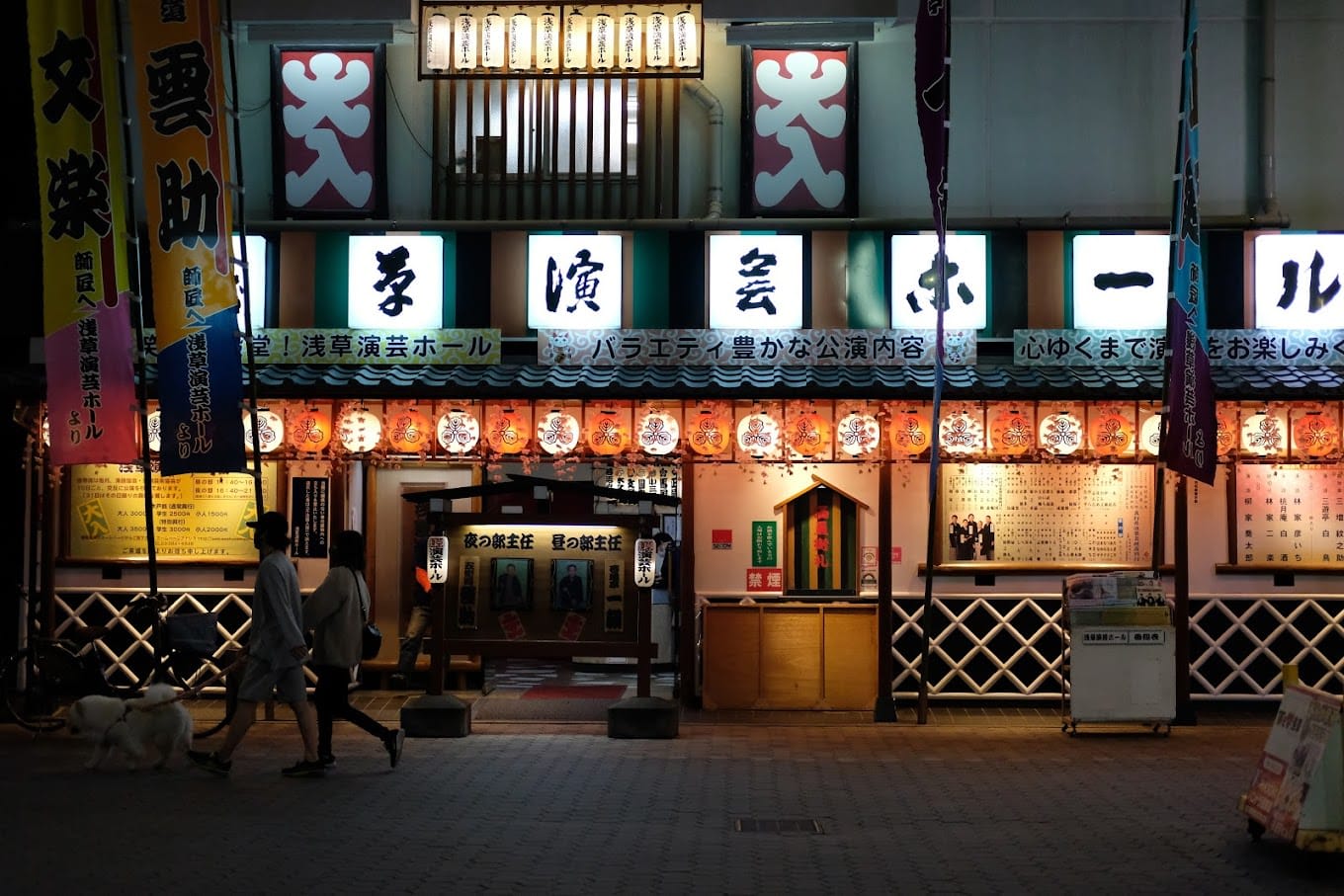
Asakusa Engei Hall is a valuable spot where you can casually enjoy traditional Japanese performing arts. When I first visited, I was completely fascinated by its unique atmosphere. The retro exterior is popular as a photo spot, and I always take commemorative photos here whenever I guide foreign friends.
Here, you can enjoy a variety of traditional performing arts throughout the day, including rakugo (comic storytelling), manzai (comic dialogue), magic, and acrobatics.
Rakugo, in particular, is an art form that can be enjoyed beyond language barriers. Not just verbal art but also rich visual elements like expressions and gestures make it enjoyable even if you don't understand Japanese. When I took my foreign friends, they greatly enjoyed it, understanding the humorous scenes from the performer's expressiveness and audience reactions, despite not understanding the language.
The exterior itself has charm, so it's recommended to visit for photography even if you don't enter. The red curtain and unique retro sign make a wonderful subject for social media. I also have memories of receiving many "likes" when I posted on Instagram.
Website: https://www.asakusaengei.com/
Recommended Courses to Fully Enjoy the Asakusa Area
Since Asakusa has many attractions, I recommend planning your course in advance to efficiently tour with limited time. Here, I'll introduce three courses based on your stay duration.
Half-Day Course (About 3-4 Hours)
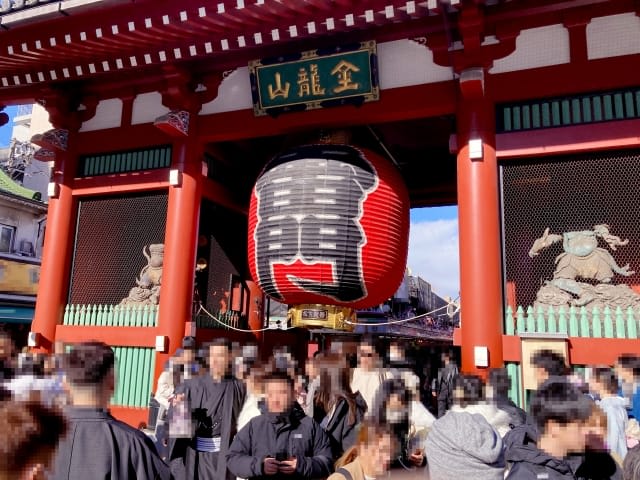
For those with limited time, I recommend a half-day course efficiently touring Asakusa's central area. This is the basic course I always use when guiding friends from overseas.
First, visit Kaminarimon and Sensoji Temple early in the morning. Especially if you can arrive before 9:00 AM, you can worship in a relaxed atmosphere with fewer tourists.
When I guided my American friend last month, we arrived at Sensoji Temple at 8:30 AM and enjoyed a very quiet and solemn atmosphere. After worshipping at the main hall and drawing omikuji, tour the attractions within the temple grounds, such as the five-story pagoda and Hozomon Gate.
Next, enjoy food strolls on Nakamise Street. If you haven't had breakfast, it's good to satisfy your hunger here.
If you have time, I recommend using kimono rental. Asakusa has many kimono rental shops where you can casually experience Japanese culture even for a short time.
Visit Asakusa Shrine too. Since it's adjacent to Sensoji Temple, access is easy. Asakusa Shrine, also called "Sanja-sama," is believed to bring good business fortune. It's an important shrine where I always visit for prayer at the New Year.
Finally, head to Sumida Park to take a break while viewing Skytree. Sitting on a bench along the river and enjoying Tokyo's scenery is perfect for refreshing during busy sightseeing. I often spend relaxed time here with friends, eating ice cream.
With this course, you can efficiently tour Asakusa's main spots without rushing, fully enjoying Asakusa's charm. Based on my experience, starting from Kaminarimon around 9:00 AM and ending at Sumida Park around 1:00 PM is just the right pace.
One-Day Course (About 6-8 Hours)

For those with a full day, I'll introduce a one-day course to fully enjoy Asakusa and its surrounding areas. I often enjoy this course for a full day when visiting Asakusa on holidays.
In the morning, like the half-day course, tour Kaminarimon, Sensoji Temple, Nakamise Street, and Asakusa Shrine. The morning has relatively fewer people, so you can enjoy worship and strolling at a leisurely pace.
After that, use kimono rental to stroll around Asakusa. Walking in kimono will undoubtedly be a special experience, receiving warm glances from locals. Also, I recommend stopping by the Edo Taito Traditional Crafts Museum.
For lunch, enjoy a meal on Hoppy Street. This street, lined with izakayas popular among locals, allows you to taste authentic downtown Tokyo gourmet. The atmosphere with more local regulars than tourists is also part of its charm.
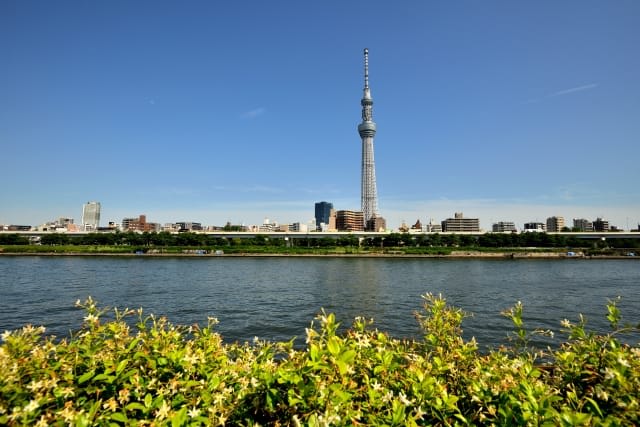
In the afternoon, head to Tokyo Skytree. While you can walk from Asakusa, I recommend using the Tokyo Water Bus to enjoy the scenery from the Sumida River. I use it frequently, and Tokyo's scenery from the water has a different charm from that on land.
From Skytree's observation deck, you can overlook Tokyo's spectacular view. On clear days, you can even see as far as Mount Fuji. When I visited, I couldn't see Mount Fuji, but I was moved by the panoramic view of Tokyo's cityscape. Also, you can enjoy souvenir shopping and cafe breaks at the shopping mall within Skytree Town.
In the evening, return to Asakusa and enjoy a Sumida River cruise on a yakatabune (roofed pleasure boat). Tokyo's scenery from dusk to night is truly beautiful, especially the illuminated Skytree and Sumida River bridges are fantastical. Last year, I reserved a yakatabune for my friend's birthday, and everyone was satisfied with the boat trip while enjoying Japanese cuisine.
With this course, you'll have a fulfilling day experiencing Asakusa's charm from various angles. It especially offers content for foreigners to know Japanese culture deeply.
Night Course (Evening to Night)
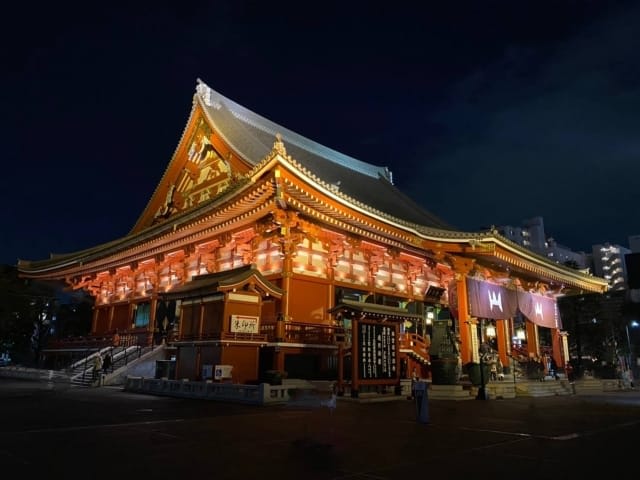
Asakusa's charm isn't just during the day. Asakusa from evening to night shows a different face from daytime. I sometimes visit Asakusa after work, and I love the atmosphere of Asakusa at night.
First, visit Kaminarimon at dusk. The large lantern illuminated as the sun sets has a fantastical beauty different from daytime. What I always feel is that at night, there are fewer tourists, allowing you to enjoy Sensoji Temple and Kaminarimon in a more relaxed atmosphere. The illuminated five-story pagoda and main hall also make excellent photo spots.
Next, stroll along the Sumida River. At night, the illuminated Tokyo Skytree and bridge lights reflecting on the water surface offer a very beautiful scene. The view from Azumabashi Bridge is particularly spectacular, and I've visited many times. Walking along the riverside under moonlight is a very romantic experience.
I also recommend enjoying nightlife in the Asakusa Rokku area. This area is dotted with bars and izakayas with a Showa retro atmosphere, allowing you to interact with locals. My favorite is "Asakusa Bakushu," a shop where you can enjoy craft beer, trying unique beers from various parts of Japan.
This night course offers a special plan to discover Asakusa's charm different from daytime sightseeing. It's especially recommended for couples or friends. Based on my experience, starting around 5:00 PM allows you to fully enjoy Asakusa at night.
Three Recommended Tours to Enjoy Asakusa to the Fullest
To maximize your enjoyment of Asakusa, I recommend tours with guides who know the local area thoroughly. Here, I'll introduce three special tours offered by our MagicalTrip.
Asakusa Cultural Walk & Matcha Making Tour

This tour is perfect for those who want to deeply know Asakusa's culture and history. In a small group (maximum 8 people), you'll tour Asakusa's historic streets with a local guide for 3 hours. The fee is 82.63 USD (about 12,000 yen), which is very reasonable considering its rich content.
Our guides have experience living in Asakusa for over 7 years and guide you through genuine Asakusa recommended by locals, not just general routes for tourists.
The tour includes experiencing Japanese culture with all five senses, such as tasting traditional snacks on Nakamise Street and explaining Japanese Buddhist culture at Sensoji Temple. When I participated, I learned information I wouldn't normally know, such as the history of Kaminari-okoshi and interesting episodes about the principal image of Sensoji Temple.
Particularly attractive is the matcha-making experience in a quiet tea room. You can experience making matcha yourself using premium matcha while listening to explanations about the history and etiquette of tea ceremony.
At the tour's conclusion, you can experience making monjayaki or okonomiyaki at a local shop in the back alleys of Hoppy Street. With vegetarian menus also available, even those with dietary restrictions can participate with peace of mind.
Since the tour is from 11:00 AM to 2:00 PM, you can continue exploring Asakusa freely after it ends. You might revisit interesting spots discovered during the tour.
For details: Asakusa Cultural Walk & Matcha Making Tour
Asakusa Kimono Photography Tour
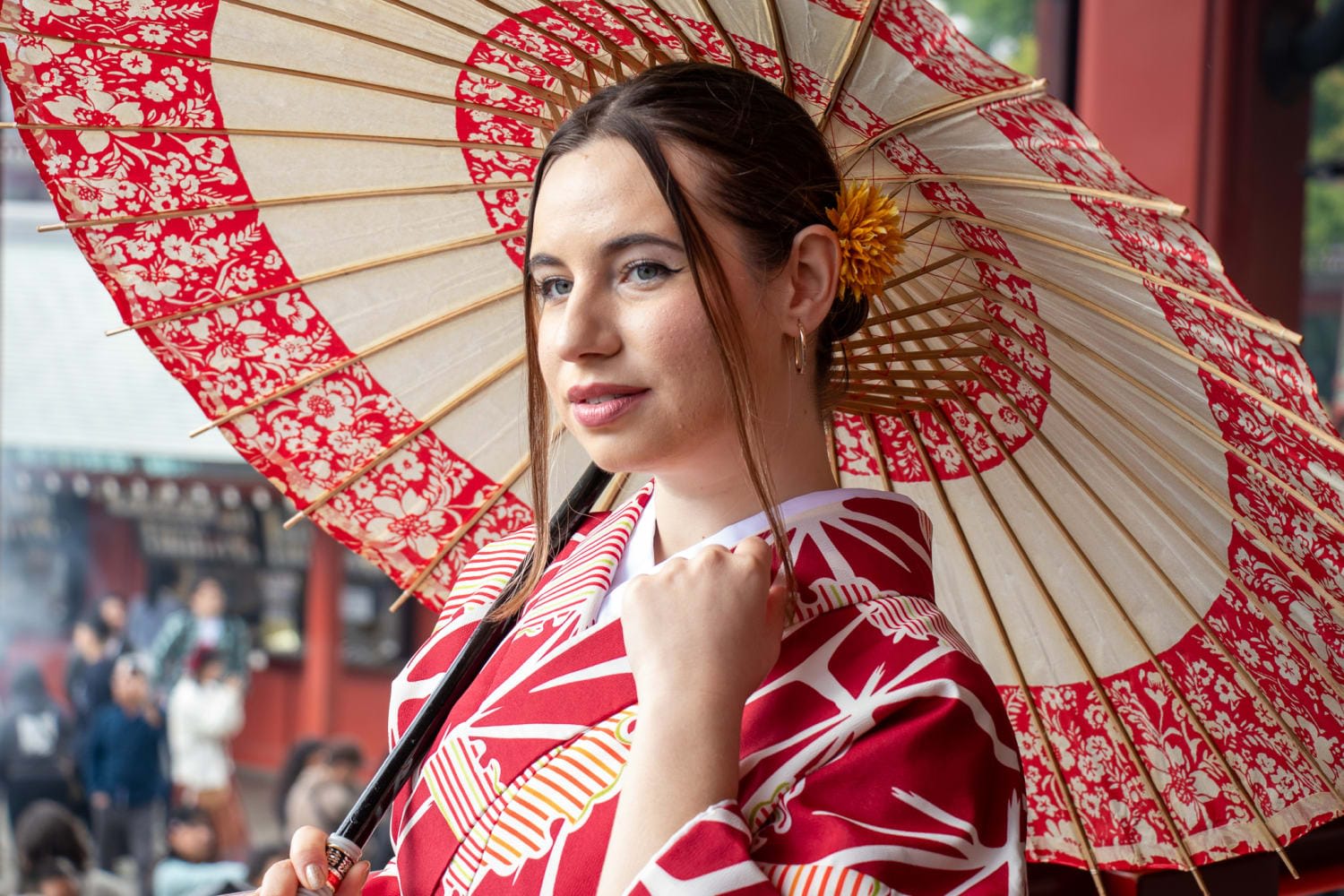
For those who want to stroll around Asakusa in traditional Japanese attire, I especially recommend this "Asakusa Kimono Photography Tour." It's a 2.5-hour tour where you can wear a kimono or yukata in Asakusa and enjoy photo sessions with a professional photographer.
The greatest attraction of this tour is that it starts early in the morning to avoid crowds. Normally, Asakusa becomes very crowded with tourists during the day, but this tour conducts photography at Asakusa's landmarks like Kaminarimon, Nakamise Street, and the five-story pagoda in the early morning when there are few people. When my friend participated, she was delighted to take wonderful photos in front of Kaminarimon with almost no people.
Ladies can choose their preferred kimono, including hairstyling. There's a wide variety of kimono types to choose from according to season and preference. My friend chose a red kimono, and its vibrant color stood out beautifully against Asakusa's scenery. Men can also choose yukata or kimono, with many participating as couples or families.
Notably, photography is by a professional photographer. They provide the best shots with professional techniques, distinctly different from selfies or regular tourist photos. There are also pose instructions, so even those uncomfortable with photos can relax. My friend also said, "I'm usually uncomfortable acting naturally in front of cameras, but thanks to the photographer's precise instructions, I got photos with very natural expressions."
After the tour, more than 20 edited photos will be emailed to you. These will certainly remain as special memories, both for social media uploads and long-term keepsakes.
For details: Asakusa Kimono Photography Tour
Master Tokyo's Must-Sees: 5-hour Tsukiji, Akihabara & Asakusa Highlights Tour
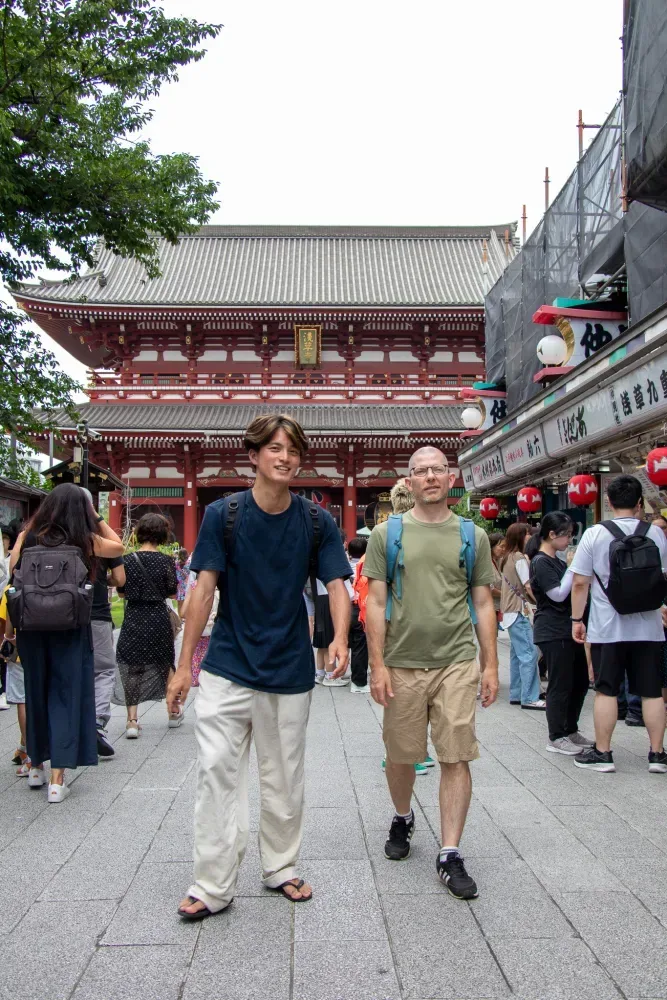
For those who want to efficiently tour Tokyo, I highly recommend this "Master Tokyo's Must-Sees" tour. It's a 5-hour tour with an English guide, allowing you to visit Tokyo's three main areas (Tsukiji Market, Akihabara, and Asakusa) at once.
At Tsukiji Market, you can enjoy the market atmosphere while tasting fresh seafood and local specialties. In Akihabara, the center of Japanese subculture, you can explore retro games, anime goods, and electronic devices.
Akihabara is very popular among foreign tourists, but when visiting for the first time, it's often too large to know what to check first. In this tour, the guide efficiently introduces Akihabara's charms, allowing you to enjoy it maximally in limited time.
Finally, you'll head to Asakusa and visit Sensoji Temple, Tokyo's oldest temple, enjoying Japanese traditional cultural experiences and food strolls in shopping streets.
The greatest charm of this tour is efficiently visiting three areas with different attractions using public transportation. Planning and moving on your own would take time, and you might get lost. However, with this tour, the guide will lead you through the optimal route, allowing you to experience Tokyo's diverse attractions in limited time.
For details: Master Tokyo's Must-Sees: 5-hour Tsukiji, Akihabara & Asakusa Highlights Tour
Spots to Visit Along with Asakusa
To further enrich your Asakusa tour, I recommend visiting nearby spots. Using Tokyo's efficient public transportation, you can easily visit areas with different attractions by extending just a little from Asakusa.
Using MagicalTrip's "Master Tokyo's Must-Sees: 5-hour Tsukiji, Akihabara & Asakusa Highlights Tour" mentioned earlier allows you to efficiently enjoy Tsukiji and Akihabara along with Asakusa, which I recommend.
Ueno
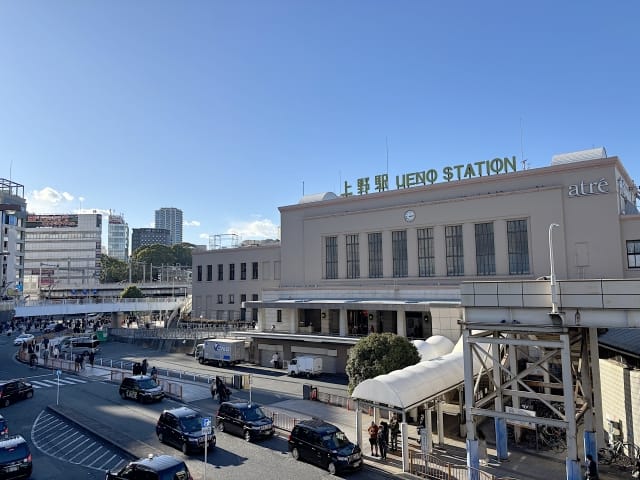
Ueno, just a 5-minute ride on the Tokyo Metro Ginza Line from Asakusa, is an attractive area where culture and nature are fused. I often stop by after Asakusa sightseeing, and I make new discoveries in its diverse attractions each time.
Ueno Zoo is definitely the most popular spot, especially the pandas. The zoo is large, but with half a day, you can tour the main exhibition areas.
Ueno is also called the "City of Museums," with world-class cultural facilities gathered, including the Tokyo National Museum, the National Museum of Western Art, and the National Museum of Science. Especially, the Tokyo National Museum is Japan's oldest museum, possessing numerous national treasure-level collections. What I particularly like are the Japanese sword and ukiyo-e collections, where you can touch traditional Japanese fine arts.
And Ameyoko (Ameya Yokocho) is a vibrant shopping street selling various goods from food ingredients to clothing and accessories. I sometimes visit for shopping or food strolls, and its lively atmosphere is always enjoyable. Especially at seafood and fruit shops, you can enjoy the downtown atmosphere with the energetic calls of shopkeepers.
Akihabara
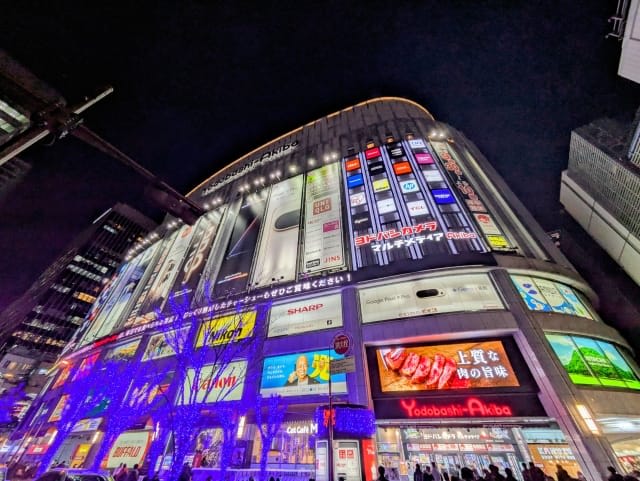
Akihabara, known as the Electric Town, is just a 10-minute train ride from Asakusa. I like electronic devices, so I often extend my visit there after Asakusa sightseeing. Current Akihabara isn't just an electric town but is internationally famous as the center of Japanese subculture.
Akiba (as locals call it) is lined with anime and game-related shops, truly a sacred place for otaku culture. From large stores to specialized small shops, various stores gather, making it a heaven-like place for those looking for Japanese anime goods and figures. My foreign friends are also very happy when they find limited goods only available here.
Maid cafes are popular as a unique cultural experience in Akihabara. These are cafes where staff in maid costumes serve customers calling them "Master" or "Lady," a place to experience Japanese subculture. I've guided several times at the request of foreign friends, and everyone was very interested in the unique atmosphere. Recently, many shops have prepared English menus for foreign tourists.
Tsukiji

Tsukiji, about a 20-minute train ride from Asakusa, is a gourmet spot Japan proudly presents to the world. While the former Tsukiji Market moved to Toyosu in 2018, the Tsukiji Outer Market still thrives, crowded daily with tourists seeking fresh seafood. I love this place so much that I visit about once a month.
At Tsukiji Outer Market, you can enjoy fresh seafood bowls and sushi. Especially if you go early in the morning, you can enjoy dishes using the best ingredients landed that day.
Strolling through the market, you can feel the depth of Japanese food culture firsthand. Many specialized stores dealing with dried foods, seasonings, cooking utensils, etc., line up, and Japanese craftsmanship-shining knives and tableware are also popular as souvenirs. Recently, I purchased a high-quality deba knife as a gift for a friend who loves cooking, and they were very pleased.
If you visit Tsukiji, I recommend early morning sightseeing. Especially at sushi restaurants, it's not uncommon for lines to form before opening to secure the first seats. In the past, I met with a friend from America at 6:00 AM and lined up at a famous restaurant, but the taste definitely rewarded our effort.
Ginza
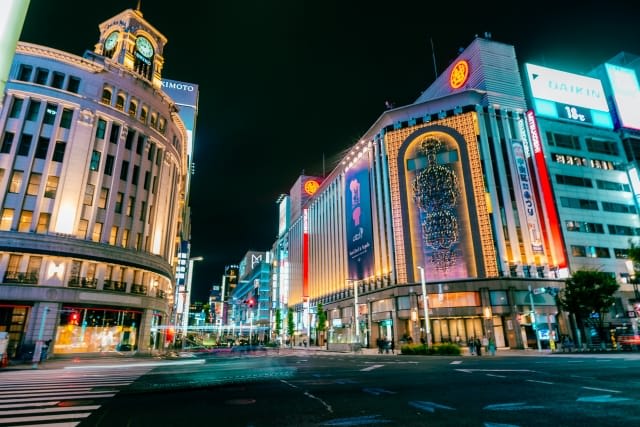
Ginza, about a 15-minute ride on the Tokyo Metro Ginza Line from Asakusa, is Tokyo's representative high-end shopping area. It features a sophisticated cityscape, contrasting with Asakusa's down-to-earth atmosphere. I like window shopping in Ginza with friends, and on special days, I sometimes enjoy dinner at Ginza restaurants.
Ginza gathers luxury brand shops from around the world, making it an irresistible place for shopping lovers. Flagship stores of named brands like Chanel, Louis Vuitton, and Hermès line Ginza Street.
Even without actually shopping, you can enjoy just seeing the displays and architectural designs. I sometimes visit to see new collections, but I'm always impressed by the elaborate store designs that each brand puts effort into.
Ginza also has many long-established high-end stores, particularly dotted with famous Japanese cuisine restaurants such as sushi and tempura. Michelin-starred restaurants like "Sukiyabashi Jiro" and "Kyubey" fascinate gourmets from around the world. I've also dined at "Kyubey" on a special anniversary, and the high level of technique and ingredient quality was impressive.
Access to Asakusa
As a major tourist destination in Tokyo, Asakusa has very convenient access by public transportation. With multiple lines running through it, you can access it relatively easily from any area in Tokyo.
Tokyo Metro Ginza Line "Asakusa Station" is the most common and convenient access method. When you exit this station, you immediately arrive at Kaminarimon. I always use this station when guiding friends. It's also accessible directly from main areas of Tokyo like Ginza and Ueno, making it optimal as a tourist base.
Toei Subway Asakusa Line "Asakusa Station" is also convenient for accessing Sensoji Temple. This line allows direct access from Haneda Airport, making it especially convenient for tourists from overseas. My overseas friends often head directly to Asakusa from Haneda Airport. You walk a bit from the station to Sensoji Temple, but part of the charm is experiencing the downtown atmosphere on the way.
Tsukuba Express "Asakusa Station" is a bit away from Sensoji Temple but convenient for access from Akihabara. For those planning to tour Akihabara and Asakusa in one day, this line is recommended. I use it occasionally, and the route from this station to Sensoji Temple has many interesting dining establishments, making it enjoyable to stroll towards it.
Asakusa is a representative tourist destination in Tokyo that retains strong traditions and culture from the Edo period while incorporating modern attractions. From symbolic landmarks like Kaminarimon and Sensoji Temple to food strolls on Nakamise Street, shopping for traditional crafts, and experiences like strolling in kimono or matcha experiences, you can experience Japanese culture from various angles in Asakusa.
Using tours provided by MagicalTrip, you can touch deeper charms of Asakusa with local guides. Being able to enjoy cultural experiences and kimono photography without language barriers is a great attraction for foreign tourists.
From Asakusa, you can easily access popular tourist destinations like Ueno, Akihabara, Tsukiji, and Ginza, making it optimal as a base for Tokyo tourism. By combining traditional Asakusa with modern Akihabara, or the down-to-earth atmosphere of Asakusa with the luxury of Ginza, you can experience Tokyo's diverse charms at once.
Please refer to this article to create unforgettable memories in Asakusa!
